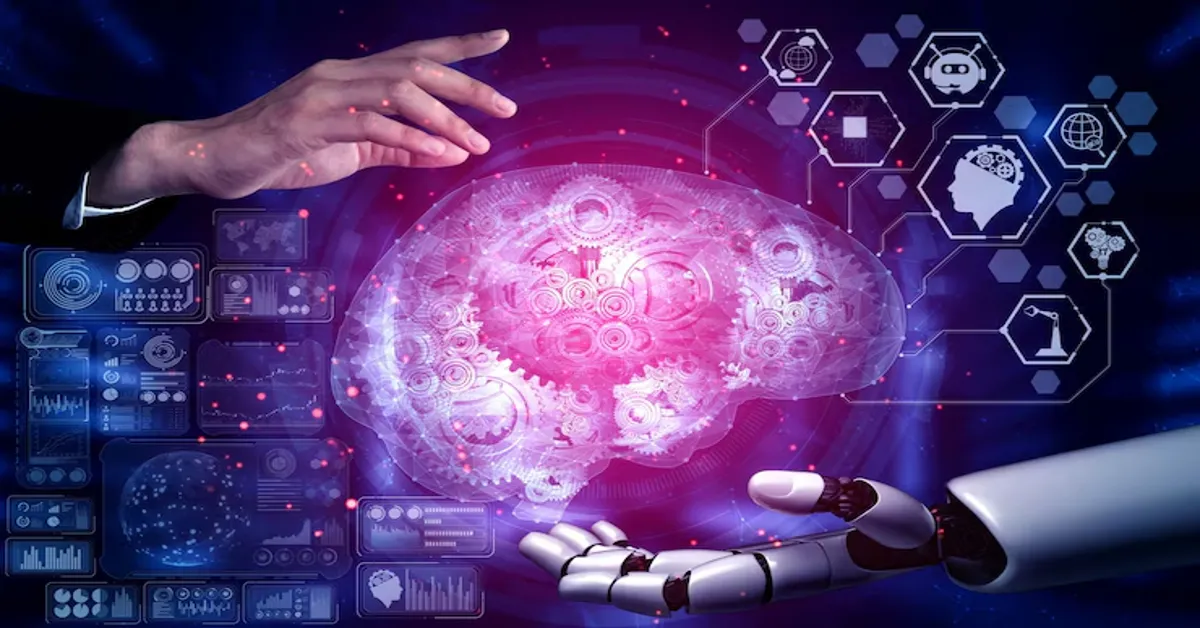Introduction: The New Age of Cognitive Technology
In a world where artificial intelligence increasingly shapes industries, relationships, and even creativity itself, the boundaries between human cognition and technological enhancement are dissolving. Miiyazuko Sant.2 is not just a product of this revolution—it is a provocative symbol of what may come next.
Touted as a second-generation cognitive augmentation platform, Miiyazuko Sant.2 offers users a suite of tools that blend neuroscience, adaptive AI, and behavioral science. It promises what was once the realm of science fiction: not simply storing or recalling information but enhancing the very processes of thought, emotion, and learning.
But with its promise comes a host of ethical, societal, and philosophical questions. This article takes a deep dive into the emergence of Miiyazuko Sant.2, how it works, and what it might mean for the future of human potential.
The Origin Story: From Experimental Neuroscience to Public Platform
Miiyazuko Sant.2 is the brainchild of a multidisciplinary consortium—NeuroGraph Nexus—formed by neuroscientists, ethicists, software engineers, and cognitive psychologists. Their mission was bold:
“To develop a system that not only aids cognition but enhances wisdom, resilience, and ethical reasoning.”
The project’s first iteration, Miiyazuko Sant.1, was launched in 2022 as a closed beta among research institutions. It focused on neural pattern recognition, adaptive memory scaffolding, and emotional regulation cues delivered through a minimalist interface.
Despite technical limitations, the results were promising:
- Memory retention improved by an average of 47%.
- Emotional self-regulation increased by 35% among participants.
- Learning curve acceleration reached unprecedented rates in language acquisition and complex problem-solving.
Miiyazuko Sant.2, released in early 2025, built upon these foundations with exponentially more sophisticated algorithms and an adaptive, user-centered design philosophy.
Read: OnThisVerySpot.com: Mapping History, Memory, and Meaning in the Digital Age
How It Works: The Technology Behind Miiyazuko Sant.2
1. Neural Adaptive Interface (NAI)
Users interact with Miiyazuko Sant.2 through a discreet neural headset or a biometric wristband, which monitors brainwave patterns, cortisol levels, and heart rate variability. Unlike invasive neural implants, this system preserves user autonomy and minimizes health risks.
2. Real-Time Cognitive Feedback
Miiyazuko Sant.2 provides subtle prompts and suggestions, adapting to the user’s mental state in real time. For example:
- Focus Enhancement: Redirecting attention during tasks requiring deep concentration.
- Emotional Modulation: Providing breathing cues or mindfulness exercises when stress markers spike.
- Memory Support: Offering mnemonic aids and pattern connections aligned with the user’s learning goals.
3. Ethical AI Core
Uniquely, Miiyazuko Sant.2’s AI is programmed with ethical reasoning constraints. It avoids manipulative nudging, supports user consent in every function, and prioritizes mental health over performance metrics.
4. Personalization Engine
Through continual learning, the platform refines its interventions without storing sensitive data on centralized servers, a major step forward in privacy-preserving AI.
The Human Experience: Empowering or Overwhelming?
Case Study: A Language Learner
Maria, a 35-year-old non-native English speaker, used Miiyazuko Sant.2 to accelerate her acquisition of technical legal vocabulary. Within six months, her comprehension and fluency surpassed her peers, aided by the system’s contextual memory cues and focus enhancement techniques.
“It was as though the barrier between intention and understanding dissolved,” she reported.
Case Study: A High-Stakes Negotiator
Devin, a corporate mediator, found the platform invaluable for emotional regulation during high-pressure negotiations. Miiyazuko Sant.2’s stress indicators and cognitive reframing prompts allowed him to maintain composure and think strategically.
“It didn’t make me less human,” he said. “It helped me be the best version of myself.”
But Not Without Challenges…
Some early adopters reported cognitive overload when using the system excessively. Others described a phenomenon known as meta-awareness fatigue—becoming overly conscious of their own mental processes to the point of distraction.
Miiyazuko’s developers responded swiftly, introducing healthy use limits and reinforcing the principle that augmentation should complement, not replace, organic cognition.
Ethical Frontiers: Consent, Autonomy, and the Future of Mind Enhancement
The introduction of Miiyazuko Sant.2 into the mainstream has ignited intense debate among ethicists, educators, and policymakers.
Supporters Argue:
- Enhanced Learning Equity: Such technology can democratize access to advanced learning tools.
- Cognitive Diversity: Augmentation supports neurodivergent individuals in navigating traditional educational and professional landscapes.
- Mental Health Integration: The platform’s real-time emotional feedback can serve as an early intervention tool for stress and anxiety disorders.
Critics Counter:
- Cognitive Inequality: If access is limited to affluent users, disparities could widen.
- Autonomy Risks: Even well-intentioned prompts may subtly shape thought patterns in problematic ways.
- Data Ethics: Despite robust privacy claims, the collection of neural and biometric data raises profound concerns.
Educational and Professional Implications
In the Classroom
Educators are cautiously exploring Miiyazuko Sant.2 as a tool for differentiated instruction. By offering adaptive learning aids, students with varied needs can engage with content at their own pace.
Some schools have adopted Miiyazuko Learning Labs, blending traditional instruction with cognitive augmentation for high school and university students.
In the Workplace
Professionals across industries—from surgeons to software developers—are using the platform to manage focus, reduce error rates, and accelerate complex problem-solving.
The key advantage? Unlike automation, which replaces human effort, Miiyazuko Sant.2 amplifies human capability.
Cultural Impact: Redefining What It Means to Learn
Miiyazuko Sant.2 is more than a technological milestone. It’s a cultural catalyst.
It challenges long-standing assumptions:
- That intelligence is fixed.
- That emotional resilience can only be cultivated through time and experience.
- That technology inherently alienates rather than empowers.
As cultural historian Dr. Alina Verhoeven noted, “Miiyazuko Sant.2 redefines learning as a dynamic, lifelong, technologically integrated journey.”
Looking Ahead: Miiyazuko Sant.3 and Beyond
The development team has already outlined preliminary goals for Miiyazuko Sant.3, which may include:
- Cross-Cultural Cognitive Mapping: Helping users adapt to diverse cultural contexts in real-time.
- Collaborative Neural Networks: Facilitating enhanced group problem-solving by synchronizing cognitive feedback across teams.
- AI-Guided Meta-Learning: Teaching users how to learn more effectively, even without ongoing augmentation.
But developers remain cautious. As one insider stated, “Just because we can enhance doesn’t mean we always should. Ethics must evolve alongside capability.”
Conclusion: A New Cognitive Contract
Miiyazuko Sant.2 is not merely a tool. It represents a new cognitive contract between humans and technology.
It asks us to consider:
- How much enhancement is desirable?
- Who gets to decide how our minds evolve?
- What does it mean to remain fully human in an age of augmentation?
For now, Miiyazuko Sant.2 serves as both a beacon and a warning—illuminating the extraordinary possibilities of the future while reminding us to tread thoughtfully, deliberately, and ethically.
“To think more clearly is to live more fully,” the company’s mission statement reads.
It may be the most human aspiration of all.
Frequently Asked Questions (FAQs) About Miiyazuko Sant.2
1. What is Miiyazuko Sant.2?
Miiyazuko Sant.2 is an advanced cognitive enhancement platform combining neuroscience, AI, and behavioral science to help users improve memory, focus, emotional regulation, and learning efficiency.
2. How does Miiyazuko Sant.2 work?
The platform uses a neural adaptive interface—through a non-invasive headset or wristband—that monitors cognitive and emotional signals. It delivers real-time feedback, memory aids, focus prompts, and emotional modulation techniques tailored to the user.
3. Is Miiyazuko Sant.2 safe and ethical to use?
Yes. It’s designed with ethical AI constraints, prioritizing user consent, mental health, and privacy. Unlike many tech products, it avoids manipulative nudging and stores minimal personal data.
4. Who can benefit from Miiyazuko Sant.2?
Students, professionals, neurodivergent individuals, and anyone seeking cognitive support can benefit. It’s also being piloted in educational institutions and high-pressure industries for enhanced performance and resilience.
5. What makes Miiyazuko Sant.2 different from other cognitive tech?
Unlike typical productivity apps or brain-training games, Miiyazuko Sant.2 integrates adaptive AI with real-time emotional and cognitive support while maintaining strict ethical and privacy standards.

